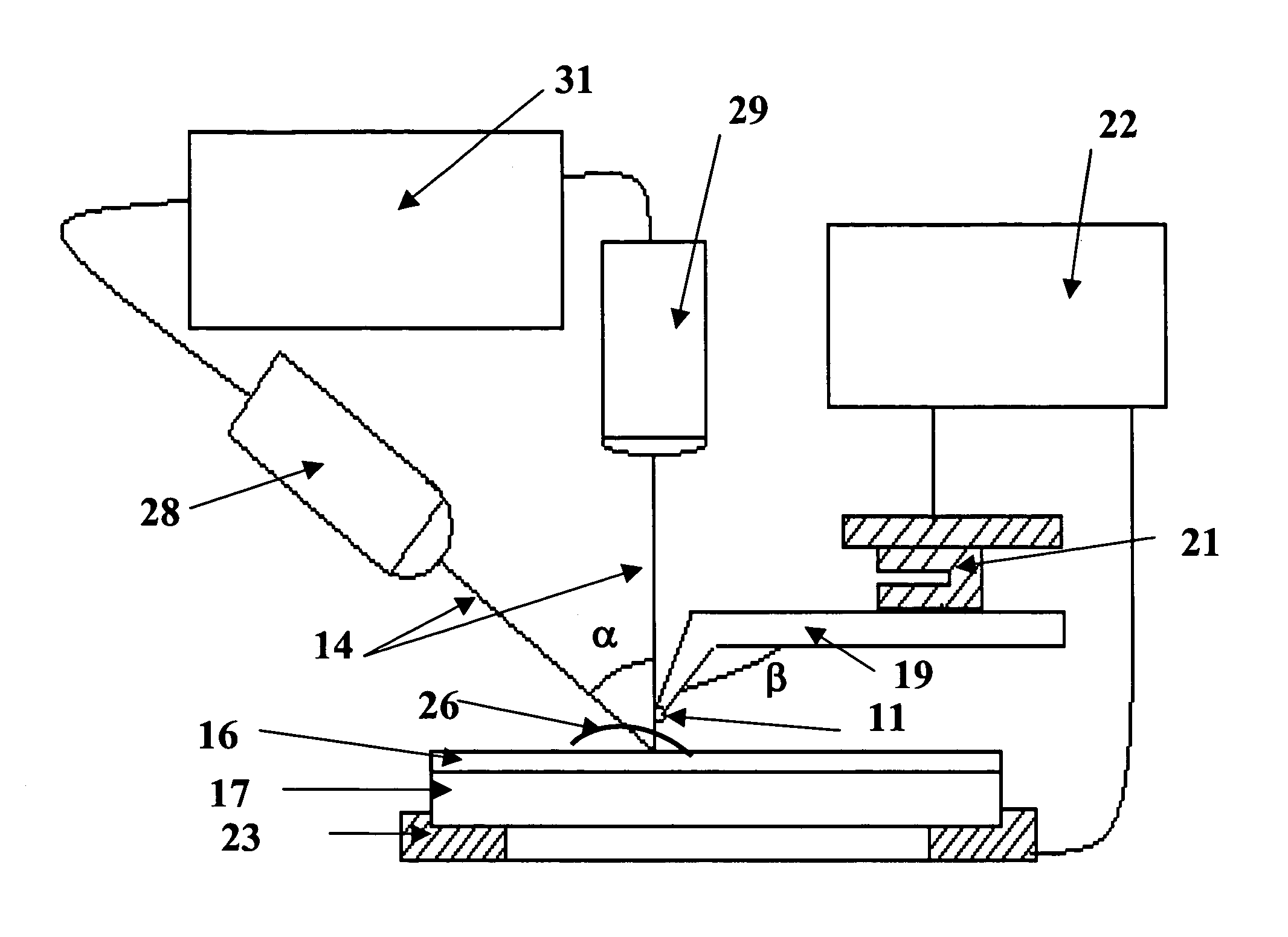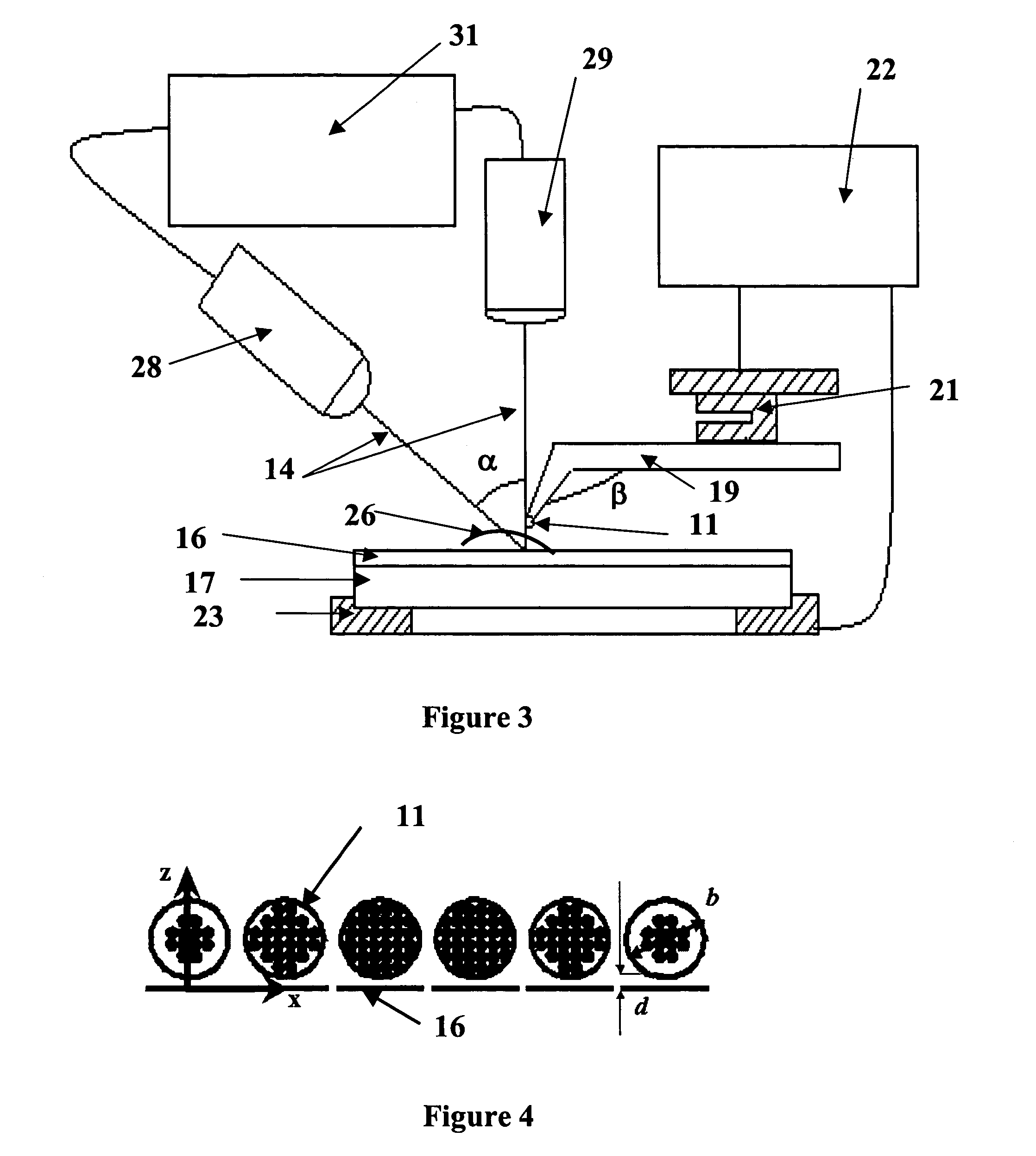Raman imaging and sensing apparatus employing nanoantennas
a sensing apparatus and nanoantenna technology, applied in the direction of optical radiation measurement, instruments, spectrometry/spectrophotometry/monochromators, etc., can solve the parasitic raman signal resulting from the fiber itself, fiber based delivery or collection system, etc., to facilitate nanoscale vibration spectra and high sensitivity
- Summary
- Abstract
- Description
- Claims
- Application Information
AI Technical Summary
Benefits of technology
Problems solved by technology
Method used
Image
Examples
Embodiment Construction
[0021]In accordance with the present invention plasmon resonance is induced by light striking a nanoantenna which comprises a metal tip and a metal substrate or particle spaced from the tip with the plasmon resonance exciting a sample at the interface to cause molecular vibrations which provide Raman scattering.
[0022]Let us estimate the advantage of using a nanoantenna instead of a single particle or tip as in the prior art SERS. One can consider the simplest nanoantenna as a pair of metal particles for this purpose. The electric field of a resonant light wave acting inside the pair is stronger than the local field in a single particle. The enhancement factors Ei / E0 for a local field Ei, in comparison with an incident field E0, is G=∈12 / 3∈2 for a plasmon resonance in a pair [S. G. Rautian et al., JETP Lett. 47 (1988) 243] and f1=3∈0 / i∈2 for a single particle. Here ∈=∈0∈1+i∈2 and ∈0 are the dielectric constants of a metal particle and a host medium. A value of G=18 is estimated for a...
PUM
| Property | Measurement | Unit |
|---|---|---|
| diameter | aaaaa | aaaaa |
| diameter | aaaaa | aaaaa |
| height | aaaaa | aaaaa |
Abstract
Description
Claims
Application Information
 Login to View More
Login to View More - R&D
- Intellectual Property
- Life Sciences
- Materials
- Tech Scout
- Unparalleled Data Quality
- Higher Quality Content
- 60% Fewer Hallucinations
Browse by: Latest US Patents, China's latest patents, Technical Efficacy Thesaurus, Application Domain, Technology Topic, Popular Technical Reports.
© 2025 PatSnap. All rights reserved.Legal|Privacy policy|Modern Slavery Act Transparency Statement|Sitemap|About US| Contact US: help@patsnap.com



